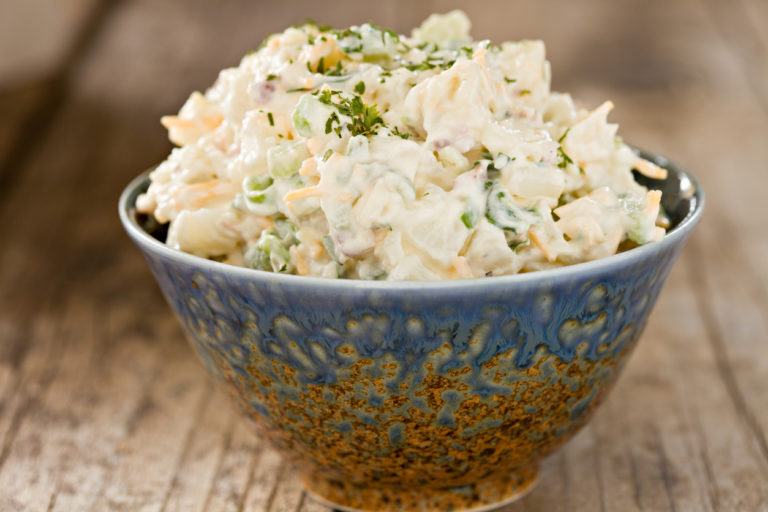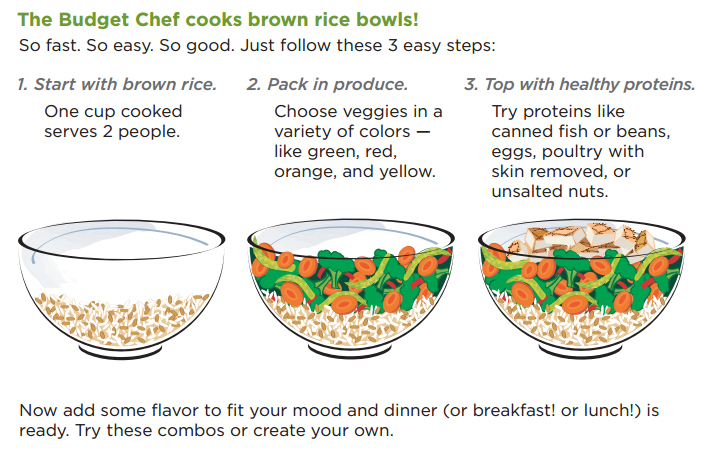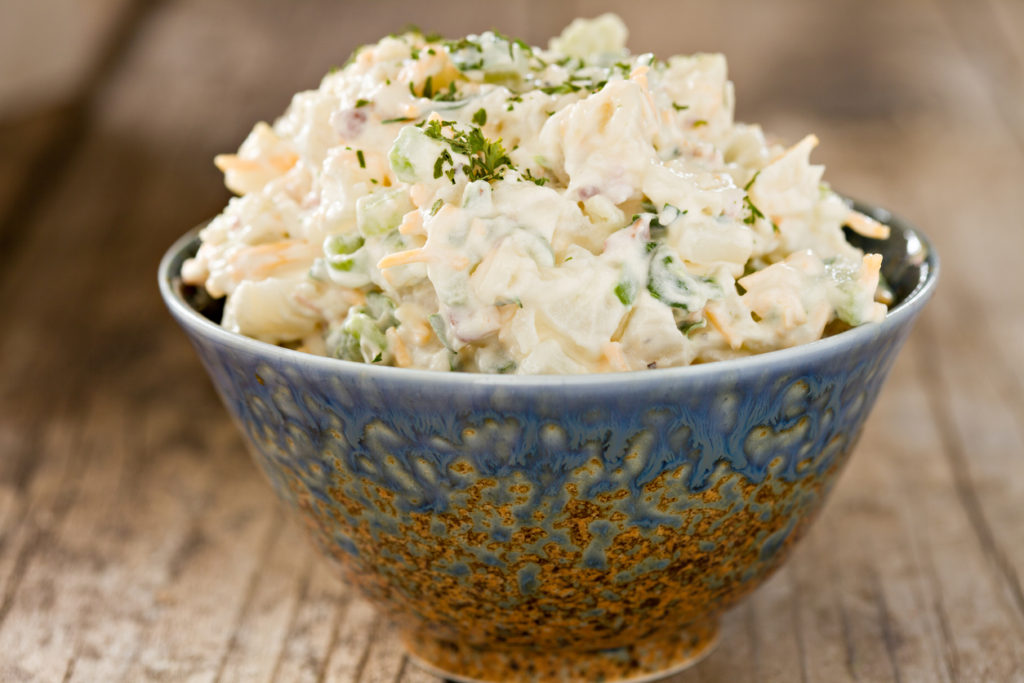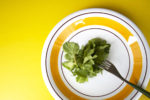
We really love all the resources the USDA put together for this year’s National Nutrition Month and wanted to pass along a few of our favorite tips from their “Meeting Your MyPlate Goals on a Budget” guide (click here to download the PDF) on how to eat a balanced, healthy diet without breaking the bank.
1. Give brown rice a try as a way to incorporate more healthy grains.
At just 10 cents and 100 calories per serving, brown rice is a great choice for your wallet and your health.

New to whole grains? Buy the whole-grain version of the grains you already love. You can find whole grain cereal, rice, pasta, bread, crackers, tortillas, and more. To get your family used to the more wholesome taste, start by mixing them together — like half brown rice and half white rice.
Cooked whole grains like brown rice can be stored in the fridge for 3-5 days or frozen for up to 6 months. Make a big batch over the weekend or whenever you have the most time. Then use with your meals all week long. Just add a small amount of water to add moisture when reheating.
Whole grains that contain fiber can keep you full for longer — so you may not need to cook or serve as much to begin with!
2. Choose lean proteins like eggs or beans.

At just 15 cents per egg, eggs are one of the most affordable sources of high-quality protein. One egg contains 6 grams of protein and varying amounts of 13 essential vitamins and minerals — all for about 70 calories. Studies suggest that healthy individuals can enjoy an egg a day without increasing blood cholesterol levels.
3. Looking for potassium? Think potatoes.
At about 19 cents per serving, potatoes are the largest, most affordable source of potassium in the produce department. They have even more potassium than a banana!

Most Americans are not meeting the recommended amount of potassium per day — and that’s a big deal. Potassium can help lower blood pressure and may decrease chances of kidney stones and bone loss.
4. Substitute lower fat dairy for healthier recipes
Addicted to cream cheese? Ask if your grocery store carries Neufchâtel cheese, which has about 1/3 of the fat. Non-fat plain yogurt is also versatile and can be used in a wide range of recipes. Try substituting it for mayonnaise in egg salad or in this recipe for Quick and Easy Baked Potato Salad:

QUICK AND EASY BAKED POTATO SALAD
MATERIALS
Large bowl • Measuring cups • Measuring spoons • Microwave-safe dish with lid • Mixing spoon • Sharp knife
INGREDIENTS
1½ pounds red potatoes
1 cup non-fat plain yogurt
cup minced red onion
½ cup shredded reduced-fat Cheddar cheese
¼ cup snipped fresh chives
3 tablespoons real bacon bits or pieces
¼ teaspoon salt
Freshly ground pepper to taste
Chopped fresh parsley, optional
DIRECTIONS
1. Place whole potatoes (do not poke) into microwave-safe dish.
2. Cover dish. (If covering dish with plastic wrap, poke small hole in plastic).
3. Microwave on high for 10 to 12 minutes depending on strength of microwave.
4. Use oven mitts or a towel to remove dish from microwave; carefully remove cover from dish due to steam build-up and let cool.
5. Cut potatoes into bite-size pieces and place in a large bowl with remaining ingredients; stir well to mix.
CHEF’S NOTES • This salad may be served right away, but is best if refrigerated for at least one hour to allow flavors to blend.



